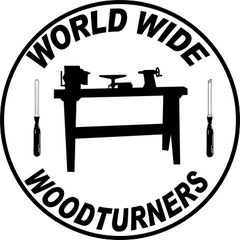
Please understand that if 100 Woodturners begin a conversation regarding finishes, we could get at least 200 opinions on what and how to perform the finishing touch. And that’s on a slow day.
Finishes can range from a multi-step process of sealer, filler and top coat. This is an age-old process used on millwork, furniture and decorations. But, as you see, it’s a three-stage process which takes time and patience.
Please notice that sealer is mentioned as the first step in the process. But, let’s change the balance of coats to Varnish, Polyurethane , epoxy paint or even “rattle can” paint finishes. Sealer is, or can be, an important part of the overall process. But why?
Sealer doesjust what it’s described as, a sealer. Sealers, of some sort, have been used in construction and fabrication since the Romans walked this earth. From sealing masonry, thatch, wood, and other products; it was used to block the surface from water, stains and abuse. They have varied from natural, animal-based products to man-made formulas.
By sealing the surface of the wood, fillers, paints and other finishes do not have to compete with the finished product. For instance, you create a piece of work in a piece of wood which has a distinctive pattern of high and low grain textures. A simple coating of your chosen finish product may adhere to these bands in dissimilar patterns. You have worked towards a great bowl, vase, trinket, etc. only to find that even with all the sanding you perform, it’s not a good finish.
An easy way to overcome this obstacle is a coat, or two coats, of a lacquer-based sealer will create a stable platform. I mentioned two coats because a very common practice is to apply a coat, allow it to cure, buff with a “Scotch-Brite” pad, and apply another coat.
The buffing removes hairs, dust, trash from showing through.
Technically, anaerobic sealants, generally referred as inpregnants, are the most desirable as they are required to cure in the abscence of air. This is unlike surface treatments which requite as part of the curing process. Once the sealant 1s applied, and cures, it acts as a preventative coating which will resist air, gas, dust, smoke, or liquid through the barrier you have created.
Often used on woodturnings while still mounted on the lathe, the sealant is often thinned to a 50/50 mix. This mainly applies to lacquer-based sealants. I normally mix the sealant with lacquer thinner which allows the product to move more evenly across the surface. Latex products may or may not be diluted with the travel medium, experimentation may be in order for these products.
When asked, “why do you use a sealant”, I have a normal response, I believe that my work is worth wearing an undercoat before I continue my finish. Sealants are just a portion of the process of applying a finish. There may be other methods or applications, that’s the beauty of woodturning, everybody has an opinion. Opinions are like elbows, everyone has more than one, and they don’t have to match.
Cap’n Eddie Castelin
Tonight’s werballjackpot is a tank of unleaded gas and a sheet of plywood.
